You’ll find the best wearable display resolutions range from 240x240p for ultra-lightweight devices to 1920x1080p for premium AR glasses. For smartwatches, 1440x1440p square displays deliver exceptional clarity, while sport watches perform brilliantly at 454x454p with high pixel density. Fitness trackers excel with 368x448p rectangular formats that display multiple metrics simultaneously. Each resolution balances visual quality with battery efficiency depending on your specific needs. The details below reveal which resolution perfectly matches your wearable requirements.
1920x1080p Full HD Resolution for Premium AR Smart Glasses
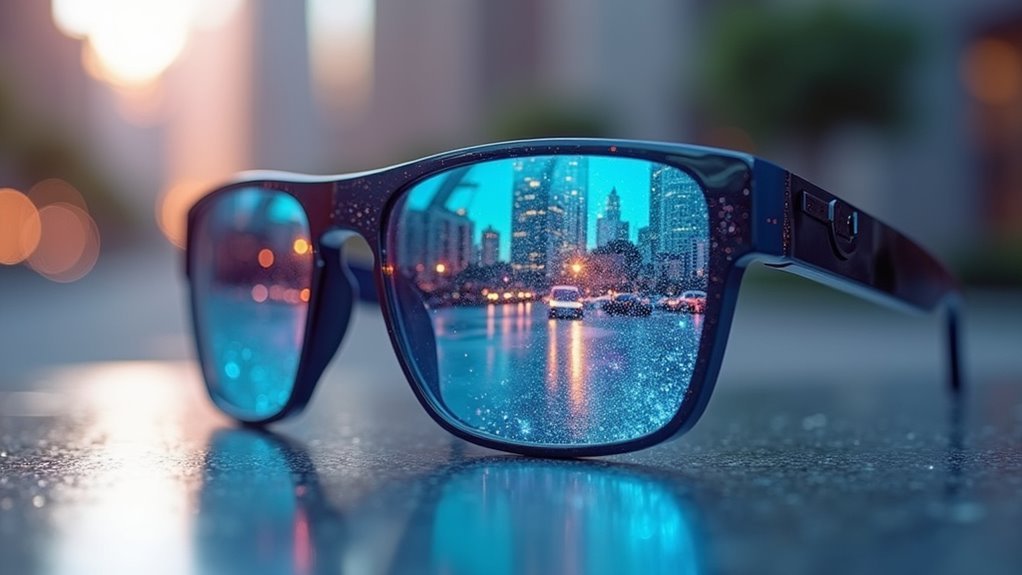
Premium AR smart glasses featuring 1080p Full HD resolution deliver exceptional visual clarity that transforms your augmented reality experience.
You’ll notice markedly sharper visuals compared to basic 640×480 displays, making text and graphics appear crisp and detailed. These premium devices utilize micro-OLED panels that provide superior contrast and color accuracy, supporting 24-bit color depth for vibrant, lifelike imagery.
Premium micro-OLED displays deliver dramatically sharper 1080p visuals with superior contrast and vibrant 24-bit color accuracy compared to basic resolution screens.
You’ll need ARM SoC processors to handle the demanding Full HD resolution smoothly. Enhanced refresh rates at 120Hz guarantee fluid motion without lag or blur.
For outdoor use, you’ll appreciate brightness levels exceeding 2000 nits that maintain visibility in direct sunlight. Modern designs like the RayNeo Air 3s weigh just 76g, assuring you can wear them comfortably during extended sessions while enjoying crystal-clear Full HD visuals. The compact design ensures maximum portability without sacrificing performance quality.
1440x1440p Square Display Resolution for Smartwatch Clarity
Square display resolutions around 1440×1440 pixels deliver exceptional clarity for modern smartwatches, transforming how you interact with tiny screens.
You’ll notice dramatically sharper text and icons compared to standard 240×240 or 320×240 displays commonly found in basic wearables. The high pixel density makes reading notifications, messages, and health data effortless without straining your eyes.
However, you’ll face trade-offs with 1440p smartwatch displays.
Battery life decreases markedly since higher resolutions demand more power to illuminate additional pixels. You’ll also pay premium prices, as these advanced OLED or AMOLED screens cost considerably more than lower-resolution alternatives.
The processing requirements increase too, potentially causing slower performance if the smartwatch’s chipset can’t handle the extra workload efficiently. Modern smartwatches may require adaptive techniques to ensure content displays properly across different screen dimensions and aspect ratios.
454x454p High-Density Resolution for Sport Watch Performance
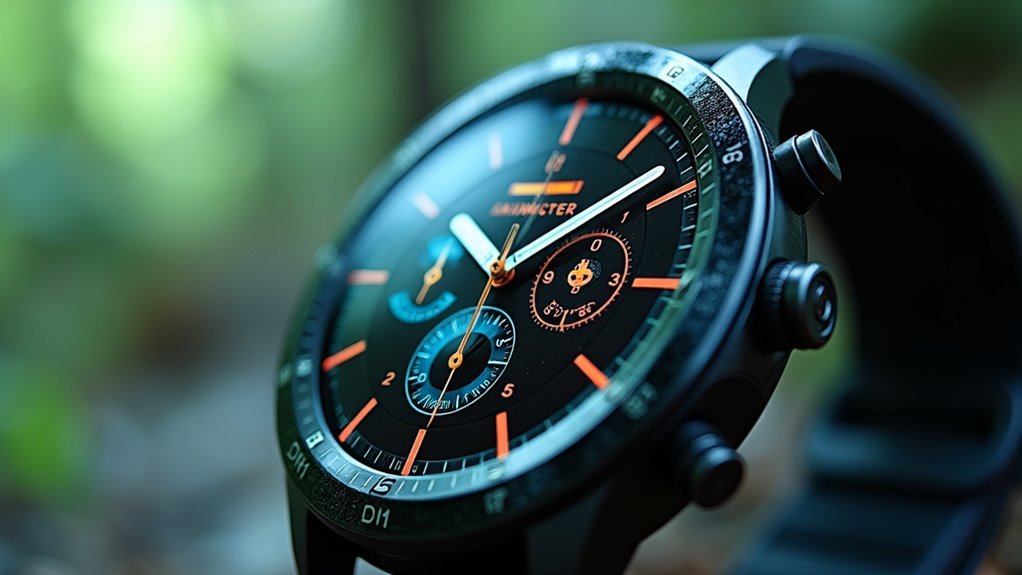
Sport-focused wearables demand different display priorities than luxury smartwatches, with x454p high-density resolution striking an ideal balance between visual clarity and athletic functionality.
You’ll appreciate the enhanced pixel density that delivers crisp text for tracking essential stats during intense workouts. The display’s high brightness levels guarantee you can read performance metrics even in direct sunlight, while power-efficient design preserves battery life throughout extended training sessions.
You’ll benefit from real-time data visualization that smoothly displays heart rate, speed, and distance without lag. The scratch-resistant materials withstand rigorous sports activities, and intuitive touch interfaces let you navigate effortlessly during exercise.
Advanced color calibration provides accurate representation of performance graphs, helping you make informed training decisions based on precise visual feedback.
368x448p Rectangular Display Resolution for Fitness Tracker Visibility
Fitness trackers utilizing x448p rectangular display resolution offer you enhanced visibility through their wider format that accommodates more data points across the screen’s horizontal space.
You’ll find this resolution provides decent text legibility with 448 vertical pixels, though clarity depends on your device’s screen size and contrast settings. The rectangular format excels at displaying multiple workout metrics simultaneously, making it easier for you to track progress bars, charts, and notifications at a glance.
While x448p falls below mainstream smartwatch standards, it’s noticeably better than basic fitness bands using 80×160 resolutions.
You’ll appreciate the improved readability at arm’s length, though you may need custom firmware support since this isn’t a standard consumer resolution. The format balances visual clarity with battery efficiency for always-on displays. Premium wearable displays like the XREAL Air 2 Pro deliver 1920×1080 resolution per eye for exceptional clarity in augmented reality applications.
240x240p Compact Resolution for Ultra-Lightweight Wearables
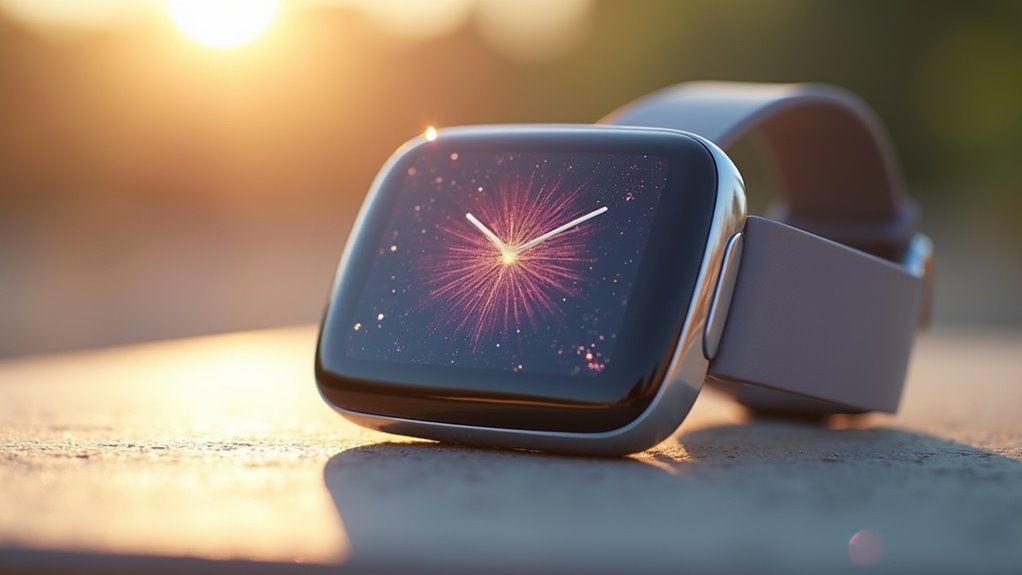
Ultra-lightweight wearables take resolution optimization further with x240p displays, where compactness becomes the primary design goal.
You’ll find these 240-pixel configurations in smartwatches and fitness bands that prioritize battery life over screen real estate. The typical 120×240 resolution on 0.95″ AMOLED panels delivers surprising clarity through ultra-fine pixel pitch.
Your x240p wearable excels in four key areas:
The x240p wearable delivers exceptional performance across four critical dimensions that define modern ultra-lightweight display technology.
- Energy efficiency – AMOLED technology minimizes power consumption for extended battery life
- Interface simplicity – SPI connectivity reduces wiring complexity and board space requirements
- Visual performance – Superior contrast and deep blacks enhance text legibility
- Always-on capability – Low refresh rates (1–60Hz) support glanceable information without battery drain
You’ll appreciate how x240p strikes the perfect balance between functionality and wearability. These displays feature the same durable design principles found in professional mobile devices, ensuring long-lasting performance despite their compact form factor.
Frequently Asked Questions
How Does Refresh Rate Affect Display Clarity Beyond Resolution Specs?
Higher refresh rates reduce motion blur and eye strain beyond what resolution alone provides. You’ll experience smoother movement, clearer fast-action content, and less visual fatigue during extended use, especially for gaming applications.
What Brightness Levels Work Best for Outdoor Wearable Display Visibility?
You’ll need at least 1,000-2,000 nits for sunny outdoor conditions. microLED and OLED displays work best, though you’ll face power consumption tradeoffs. AR headsets require even higher brightness due to optical losses.
Do OLED Displays Drain Battery Faster Than LCD in Wearables?
OLED displays don’t drain your battery faster than LCDs in wearables. You’ll get longer battery life with OLEDs since they only illuminate active pixels, while LCDs constantly power their backlight, wasting energy.
Which Display Technologies Offer the Best Color Accuracy for Professionals?
You’ll find OLED displays deliver superior color accuracy with true blacks and wide DCI-P3 gamut coverage. Quantum Dot technology also excels, offering precise color emission, while calibrated IPS LCD panels provide consistent professional-grade results.
How Does Field of View Impact Perceived Resolution Quality?
You’ll notice wider field of view reduces angular pixel density, making peripherals appear less sharp. However, you might accept lower resolution for immersion, depending on your specific task requirements and comfort preferences.
In Summary
You’ll find that choosing the right display resolution dramatically impacts your wearable experience. Whether you’re investing in premium AR glasses with Full HD clarity or opting for an ultra-lightweight device with compact resolution, there’s a perfect match for your needs. Don’t compromise on visual quality – select the resolution that aligns with your device’s purpose and you’ll enjoy crisp, clear displays that enhance every interaction.

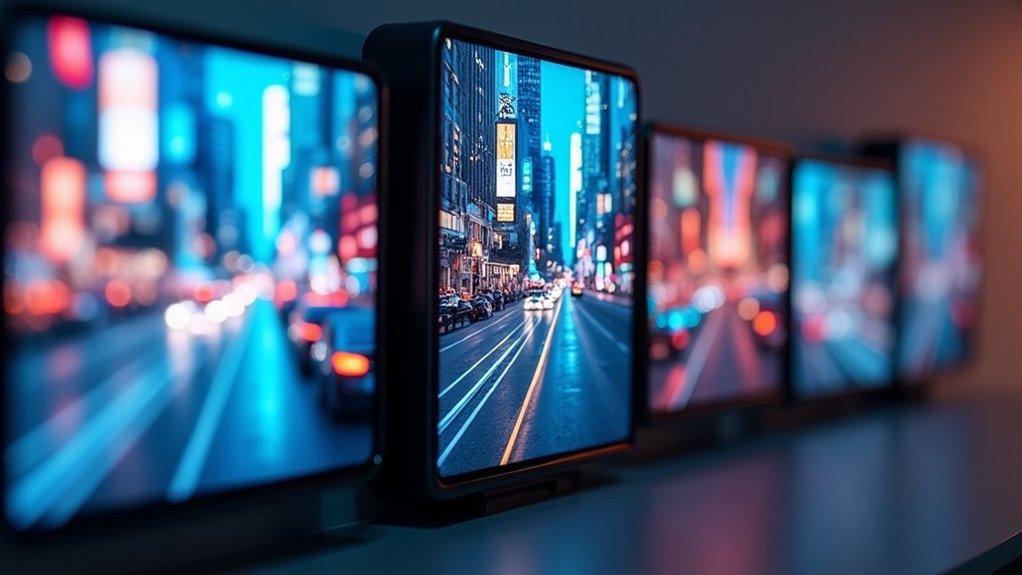

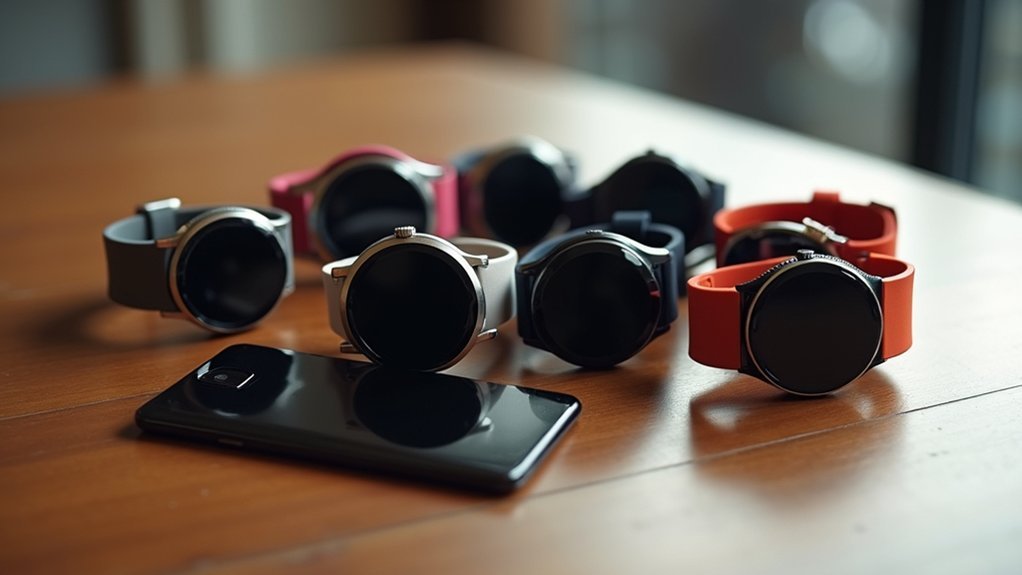
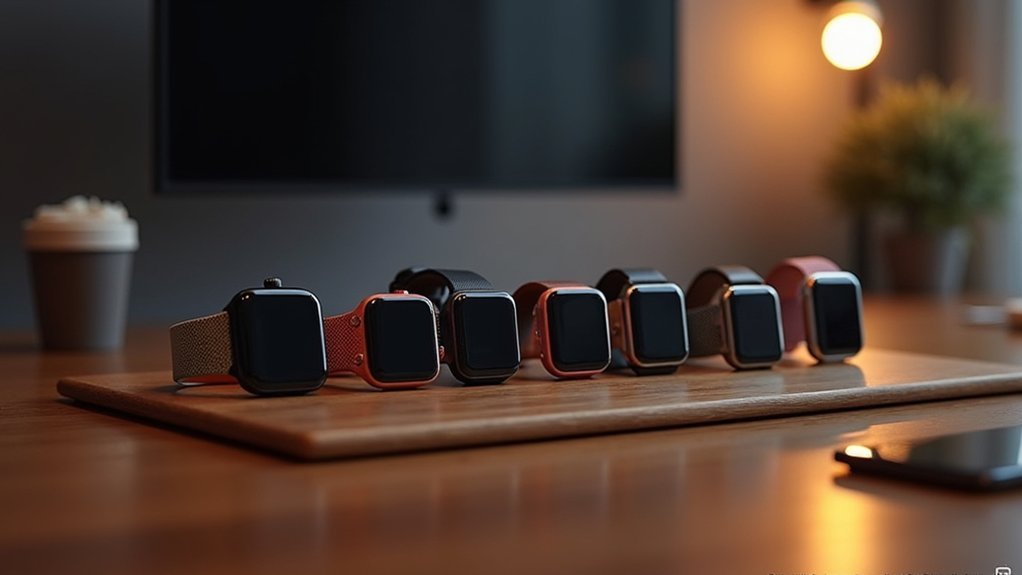
Leave a Reply